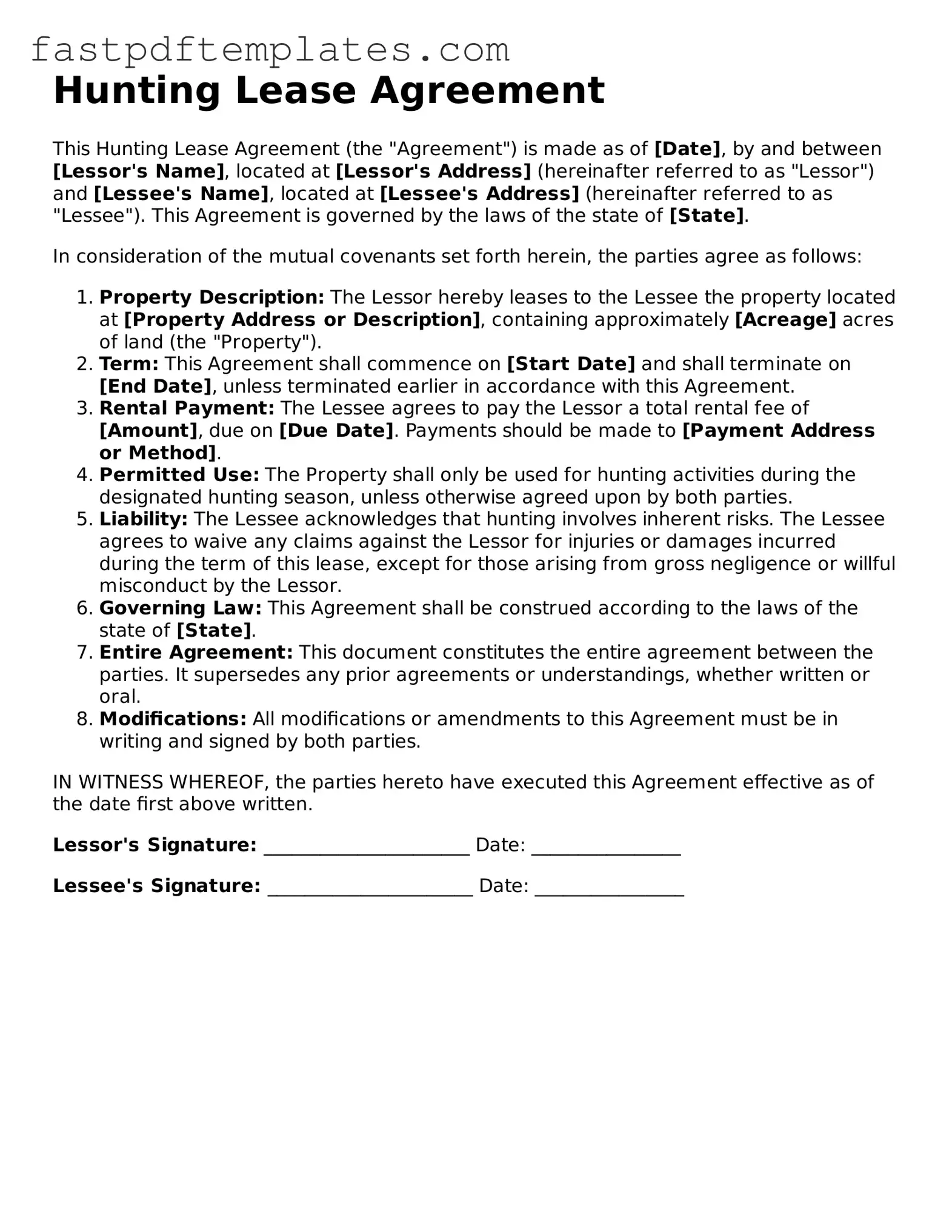A Hunting Lease Agreement shares similarities with a Rental Agreement, which outlines the terms under which a property owner allows a tenant to occupy a space. Both documents specify the duration of the lease, payment terms, and responsibilities of each party. Just as a rental agreement may detail maintenance duties and the rules of conduct within the property, a hunting lease also includes provisions regarding land use, safety protocols, and the obligations of hunters to respect the land and wildlife. Clarity in both agreements helps prevent disputes and ensures a harmonious relationship between the landlord and tenant or landowner and hunter.
Another document akin to the Hunting Lease Agreement is the Fishing Lease Agreement. This type of agreement governs the use of water bodies for fishing purposes. Like a hunting lease, it establishes the rights and responsibilities of both the landowner and the lessee. It specifies the fishing seasons, types of fish allowed to be caught, and any restrictions on methods of fishing. Both agreements aim to protect the natural resources while providing an enjoyable experience for the lessees.
The Agricultural Lease Agreement is also comparable to a Hunting Lease Agreement. This document allows a farmer to use a piece of land for agricultural purposes. Both agreements require clear communication about the land's use and maintenance. While a hunting lease might focus on the preservation of wildlife and habitat, an agricultural lease emphasizes crop rotation and soil conservation practices. Both types of leases are designed to foster sustainable practices while allowing individuals to benefit from the land.
A Land Use Agreement is another document that parallels the Hunting Lease Agreement. This agreement outlines how a piece of land can be used, including hunting, farming, or recreational activities. Like a hunting lease, it ensures that all parties understand the permitted uses and any restrictions. Both documents are crucial for protecting the landowner's interests while allowing the lessee to enjoy the land responsibly. They often include clauses that address liability and environmental concerns, ensuring that the land remains in good condition.
The Timber Lease Agreement also shares characteristics with the Hunting Lease Agreement. This document allows a lessee to harvest timber from a specific piece of land. Both agreements detail the duration of use, payment terms, and the responsibilities of the lessee regarding land care. Just as a hunting lease may require hunters to leave the land as they found it, a timber lease emphasizes sustainable harvesting practices to protect the forest ecosystem. Both types of agreements aim to balance economic benefits with environmental stewardship.
Lastly, the Wildlife Management Agreement bears resemblance to the Hunting Lease Agreement. This document focuses on the management and conservation of wildlife on a specific property. Similar to a hunting lease, it outlines the rights and responsibilities of both the landowner and the lessee. While a hunting lease permits hunting activities, a wildlife management agreement often includes strategies for habitat improvement and population control. Both agreements reflect a commitment to responsible land use and conservation efforts, ensuring that wildlife and their habitats are preserved for future generations.
